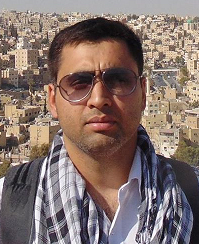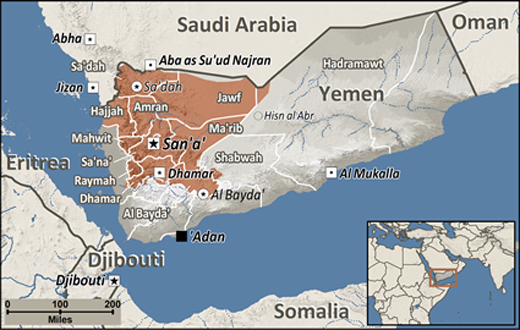Another War Looming in Yemen
Another War Looming in Yemen
mangaloretoday network
By Manish Rai
 Yemen, Sep 20, 2019: Last month port city of Aden which is currently the seat of exiled President Abdrabbuh Mansur Hadi government was captured by southern separatists demanding secession of South Yemen. The separatists are backed by the UAE, Saudi Arabia’s “So Called” partners in Yemen.
Yemen, Sep 20, 2019: Last month port city of Aden which is currently the seat of exiled President Abdrabbuh Mansur Hadi government was captured by southern separatists demanding secession of South Yemen. The separatists are backed by the UAE, Saudi Arabia’s “So Called” partners in Yemen.
The recent clashes are not the first time the two sides that is exiled President Hadi and Southern separatists have engaged in deadly fighting. Three days of battles in January last year killed dozens of people and wounded hundreds in Aden. Earlier in last month things escalated to new heights again when the Southern separatists group called Southern Transitional Council (STC) fully backed by UAE took effective control of Aden on August 10 after four days of fierce battles that killed at least 40. In practical terms, there are now three power centres and multiple militias in today’s Yemen: The Houthis, who control capital Sana’a and the northern towns, the southern separatists who are strong in and around Aden, and the internationally recognised government that is run from Saudi Arabia. Fight against the Houthis have almost stalled but another conflict i.e. between Hadi government and Southern separatists is gaining momentum. A temporary stalemate has set in, as Saudi and Emirati officials hold discussions. The two governments have issued statements supporting unity and legitimacy in Yemen. But there is little guarantee that the joint Saudi-UAE appeal, will be heeded on the ground in Aden. Current situation in South is very fragile and clashes can erupt anytime.

To understand this conflict first we have to know some historical background of North and South Yemen. The present-day Yemen consists of two formerly independent countries which united in 1990: the Yemen Arab Republic (North Yemen) and the People’s Democratic Republic of Yemen (South Yemen). The two Yemen’s had never been formally unified prior to 1990 and developed along different political and religious lines. North Yemen’s origin can be traced back to the founding of a Zaydi Shi’a imamate, a theocracy ruled by an imam, by Imam Yahya in 897. Yahya, a descendant of the Prophet Muhammad, was the first to unify the northern part of Yemen under Islamic rule. South Yemen has a different story. The area of Southern Yemen, other than being briefly ruled by the Ottomans and the Ayyubid Dynasty, had been largely ungoverned due to its sparse population and harsh environment. But in the 19 th century the Britishers colonised South Yemen as they were looking for a place, ideally on the Arabian Peninsula, where they could service ships en route to India. Still in 1994 two Yemen’s merged in the name of better economy and administrative apparatus but this merger was never implemented in its true spirit. Moreover, this unification left many southerners with unaddressed grievances about representation in the new central government and the distribution of state resources. These southern grievances persisted and became strong through a secessionist civil war in 1994 and the subsequent rise of the grassroots separatist’s movement called Southern Movement (or Hirak) in 2007.
Even today widespread grassroot support for secession persists in the south and was exemplified by a massive rally in support of the STC’s takeover of Aden. For a time being it look like that fighting in the South have stopped but there is a strong under current which can easily lead to full fledged armed conflict between Hadi government and Southern separatists. There are already reports coming from local officials on the ground that both sides are gathering troops and preparing military hardware for battle. It’s being speculated that in the oil-producing Shabwa province, government forces have been preparing to recapture the neighbouring Abyan region and the port city Aden. For sure this incoming conflict won’t be over soon as both the sides have powerful backers i.e. Saudis and Emiratis which won’t let their respective proxies to lose easily.
The international community and Arab world can’t just remain mute spectators of this conflict. As a divided Yemen will result in years of on and off war between the north and south and Southern Yemen will be more of a haven for militant Salafi groups like Al Qaeda in the Arabian Peninsula (AQAP) and Iran may deepen its relationship with the Houthis in the north and make it a client state. A divided Yemen is a perfect recipe for chronic instability and conflict in a country that occupies a strategic position along one of the world’s most important trade routes. A decentralized federalist state that provides equal degrees of autonomy and resource sharing to southern separatists, northern Houthis, and other traditionally independent regions in Yemen might form the foundations of a future Yemeni state. The first step toward de-escalation of this conflict should be that outside powers reduce their roles and let Yemenis come in forefront and decide for themselves. There is an urgent requirement of talks between President Hadi government and Southern separatists. So that some legitimate demands of separatists like better representation in the government can be addressed immediately. Otherwise unfortunately Yemen will be dragged into another bloody conflict which will only add to the ongoing sufferings of the common Yemeni.
(Author is a columnist for Middle-East and Af-Pak region and Editor of geo-political news agency ViewsAround can be reached at manishraiva@gmail.com)
- Need For ‘Students, Alcohol and Drugs’ survey
- New Synthetic Drugs Trapping Youth
- Mood Modifying Chips - Future of Drug Use
- Ramping up Indo-Bangla border security
- IITM- A premier educational Institution in a forest. What can we learn?
- Former PM, Manmohan Singh: Notable laws passed under his tenure
- Hashish on Ratnagiri Seashore
- The Poor cry out to Us: Do we respond?
- Clandestine Meth Labs Sprouting Across India
- Hydro ganja from Bangkok latest craze among youth in India
- "Memories to Treasure" Dr.Michael Lobo’s new book
- Dominance of Private Universities: Will it make education inaccessible to underprivileged students?
- Monti Phest: A rich heritage of South Canara
- Kashmir Bhavan in Bengaluru: A must visit place
- "MAI and I" Book of Angelic Emotions
- Draupadi Murmu - The New ’President of India’
- Anthony Ashram in the city grows a classic museum
- First College of Fisheries in India - A Golden Jubilarian
- Flushing Meadows - A Vintage Mansion
- The Colonel�s Bequest
- A Mangalorean PM and his RBI Governor Brother: The Extraordinary story of the Benegal Brothers
- There is no higher religion than Truth: Theosophical Society
- L�affaire - Ashu & Yiju of Mangalore
- Mangalore in Kowloon
- 1568 to 2018 AD: 450 years of Christianity in Mangaluru
- Vice President elect Naidu moves on from nadir to zenith, the phenomenal journey
- Embracing the Outdoors: How Heated Jackets Are Revolutionizing Cold Weather Activities
- Efficient and Sustainable Packaging Solutions with FIBCs
- The Hybrid Kilt Revolution | Where Tradition Gets Trendy
- Affordable Elegance | Embrace Style on a Budget with Cheap Kilts
- Unleashing Style and Functionality | Exploring Tactical Kilts
- Mangalore’s Heroic Lady marks 105th Birthday
- Santa the Christmas spirit
- Geriatric care: Mangalore strikes a fine balance
- The Don Who Made Two Empires to Clash
- CHITRAPUR SARASWATS - A Great Kanara Community
- Our new President Ram Nath Kovind’s significant journey to Rashtrapathi Bhavan
- Marriages made in heaven, big fat weddings made in India
- Eid insight - The giver of glad tidings
- CITY INFORMATION
- TRAVEL
- TOURIST INFORMATION
- HEALTH CARE
- MISCELLANEOUS




 Write Comment
Write Comment E-Mail To a Friend
E-Mail To a Friend Facebook
Facebook Twitter
Twitter  Print
Print 


